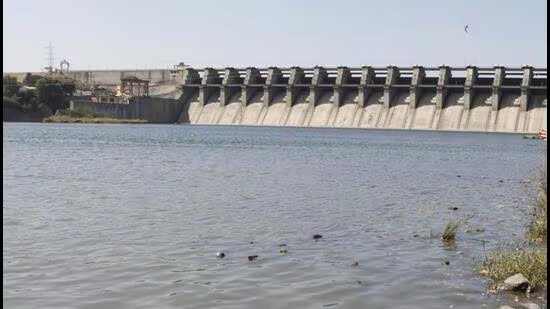
PUNE, July 10:
In a surprising development amid a 39% rainfall deficit in the Marathwada region, the Jayakwadi dam has recorded an exceptional water storage level of 66.39% as of early July — a significant jump from just 4.12% during the same period last year.
Experts attribute this unexpected boost to early and intense rainfall in May and June, especially in upstream areas like Nashik district, which recorded a 106% surplus in rainfall and contributed heavily to the inflows.
“This is the first time in the last 15 years we’ve seen such high levels in July. It’s certainly record-breaking,” said Mangesh Shelar, Executive Engineer of the Jayakwadi Dam project.
“As per protocol, water will only be released once storage crosses 78–79%. There’s no discharge planned for now.”
Located on the Godavari River in Chhatrapati Sambhajinagar district (formerly Aurangabad), the Jayakwadi dam—also known as Nath Sagar—is a crucial source of irrigation, drinking water, and industrial supply for districts including Jalna, Beed, Ahilyanagar, and Parbhani. It is designed to supply water for two years of agricultural use and up to four years for drinking.
Marathwada: 110.2 mm rainfall vs. 181.6 mm normal (39% deficit)
Nashik: 505.8 mm vs. 245.2 mm normal (106% surplus) — Highest in state
Ahilyanagar: 100.9 mm vs. 142.3 mm normal (29% deficit)
Chhatrapati Sambhajinagar: 148.7 mm vs. 162.5 mm normal (9% deficit)
According to the India Meteorological Department (IMD), the lack of strong systems over the Bay of Bengal is the primary reason behind subdued rainfall in Marathwada. However, the forecast suggests moderate to above-normal rainfall in Central Maharashtra through July, which could further support reservoir levels.
So far, Central Maharashtra has received 301.6 mm rainfall against a normal of 221.9 mm, marking a 36% surplus. Along with Nashik, Palghar (86% excess), and Pune (63% surplus), these regions play a critical role in sustaining water availability in rain-starved parts of the state like Marathwada.
Overview
Mission: To provide timely, in-depth analysis and reporting on digital policy, tech adoption, and the impact of transformation on citizens and businesses.
Focus Areas: Digital governance (e‑services, e‑payment systems like UPI), FinTech, cyber‑security, digital identity (Aadhaar), digital literacy, Internet of Things, AI, and rural connectivity initiatives.
Audience: Policymakers, tech leaders, entrepreneurs, academics, and citizens interested in India’s digital future.
Under Srinivas G. Roopi’s leadership, Digital India Times offers a trusted window into the breakthroughs and challenges of India’s digital revolution—staying true to its tagline by continuously tracking the transformation reshaping the country.
Copyright ©2025 Digital IndiaTimes. All Rights Reserved
Designed and Developed by Galaxy Tech Solutions